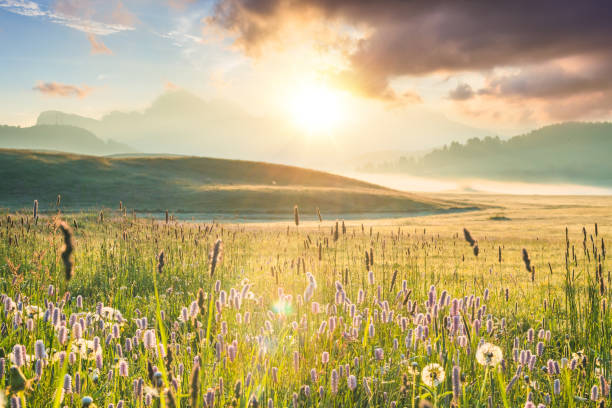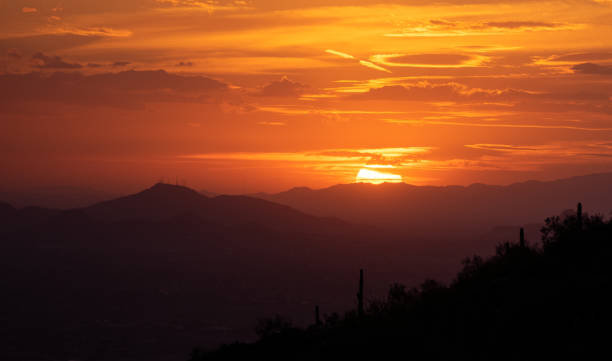How To Describe A Fire In Writing (11 Best Steps)
How To Describe A Fire In Writing
How To Describe A Fire In Writing: In the realm of storytelling, the art of description is a potent alchemy, a magical brew that transports readers into the heart of a narrative’s world.
Among the many elements that writers weave into their tapestry of words, fire stands as a captivating and elemental force.
Describing fire in writing isn’t merely an exercise in conveying heat and light; it’s an opportunity to harness the raw power of the senses, to immerse readers in a sensory experience that flickers and crackles in their minds.
It’s a dance with an elemental entity that can symbolize passion, destruction, rebirth, or transformation.
This exploration ventures beyond the physical and delves deep into the emotional and symbolic aspects of fire, revealing how this mesmerizing force can shape characters, environments, and the very essence of storytelling.
Join us on a journey through the flames, as we uncover the secrets of how to vividly and evocatively describe a fire in the written word.
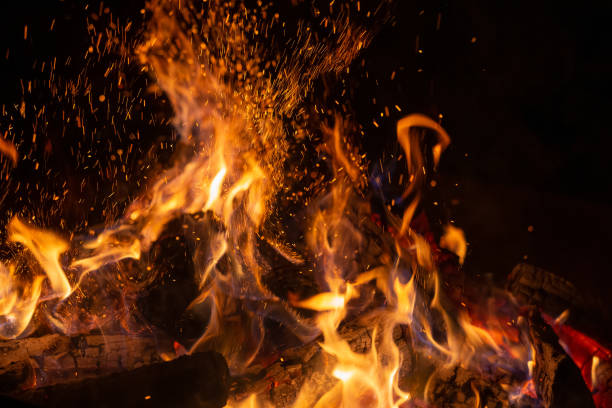
How To Describe A Fire In Writing
Describing a fire in writing involves creating vivid imagery and conveying the sensory experience to the reader. Here’s a step-by-step process on How To Describe A Fire In Writing:
Set the Scene
Begin by setting the scene. Describe the location where the fire is occurring. Is it in a forest, a building, or a campfire in the backyard? Provide context so the reader can visualize the surroundings.
Choose Your Perspective
Decide on the point of view you want to use. Are you describing the fire as an observer, a participant, or an omniscient narrator? The choice of perspective will impact the language and tone of your description.
Engage the Senses
Use sensory language to convey the experience of the fire. Describe what you see, hear, smell, taste, and feel. For example:
Sight: “The flames danced and flickered, casting an orange glow that painted the night.”
Sound: “The crackling of burning wood echoed through the stillness of the forest.”
Smell: “The air was filled with the scent of burning pine, a mix of earthy and resinous aromas.”
Taste: “The acrid taste of smoke hung in the air, making each breath sharp and bitter.”
Touch: “Heat radiated from the fire, warming my skin and making the surrounding area feel alive.”
Use Vivid Adjectives and Metaphors:
Employ descriptive adjectives to enhance the reader’s understanding of the fire. Metaphors and similes can also be powerful tools. For example:
“The flames roared like an angry dragon.”
“Embers floated upward, like glowing fireflies in the night.”
Describe the Movement and Shape
Fire is dynamic. Describe how the flames move and the shapes they create. Mention whether the fire is spreading rapidly or burning steadily. Is it a controlled blaze or a wild inferno?
Convey Emotions and Atmosphere
Consider the emotional impact of the fire on characters or the environment. Does it symbolize destruction, warmth, danger, or hope? Convey the atmosphere and mood.
Include Character Reactions:
If there are characters present, describe their reactions to the fire. Their emotions, actions, and thoughts can add depth to the scene.
Highlight the Consequences
Mention the consequences or aftermath of the fire, depending on the context. Does it leave behind ashes, charred remnants, or a sense of renewal?
Maintain Flow and Balance
Ensure that your description flows smoothly and doesn’t overwhelm the reader with too much detail. Strike a balance between vividness and conciseness.
Edit and Revise
After writing your description, review and revise it for clarity and coherence. Eliminate any redundant or unnecessary details.
Read Aloud
Read your description aloud to assess how it sounds. This can help you identify areas where the prose can be improved for better rhythm and readability.
Seek Feedback
If possible, share your description with others and ask for feedback. They can provide valuable insights and suggestions for improvement.
Remember that the effectiveness of your description depends on the context of your writing and your intended audience. Adapt your approach accordingly, whether you’re writing a novel, a news report, or a creative essay.
Understanding the Fire
Understanding the fire is like deciphering the secrets of an ancient language spoken in the tongues of flames. It’s more than just grasping the physics of combustion; it’s about communing with a living entity that dances and roars, painting stories across the canvas of existence.
Fires have personalities, each with their own quirks and moods, from the playful crackles of a campfire to the raging inferno of a wildfire.
To truly understand fire is to recognize its primal allure, its power to both create and destroy, and its ability to kindle the deepest passions within us.
It’s a journey into the heart of an elemental force that has shaped human history and imagination for millennia, and as writers, it’s our ticket to igniting the imaginations of our readers with the fiery tales we tell.
The role of fire in storytelling and symbolism
Fire, an ever-present and versatile element, plays a multifaceted role in storytelling and symbolism. It serves as a potent metaphor for transformation, representing both destruction and renewal.
In tales as ancient as Prometheus stealing fire from the gods to enlighten humanity and as contemporary as Katniss Everdeen’s fiery Mockingjay emblem, fire embodies rebellion and hope.
It illuminates the path of heroes, casting light on their trials and tribulations, while also symbolizing their inner strength and resilience.
Fire’s flickering flames and smoldering embers evoke passions, desires, and inner conflicts within characters, adding depth and complexity to their narratives.
As writers, we harness fire’s symbolic power to ignite emotions and illuminate themes, recognizing it as a timeless storyteller’s tool that sparks the imagination and fuels the essence of human stories.
Preparing to Describe
Preparing to describe is akin to embarking on a thrilling expedition into the wilderness of your imagination, armed with the sharpest senses and a treasure trove of experiences.
It’s about immersing yourself in the world you wish to portray, whether through the pages of books, the crackling warmth of a campfire, or the sizzling sounds of a bustling kitchen.
It’s a journey of research and observation, where you tread the paths of experts and get your hands dirty in the soil of knowledge. Yet, it’s also a journey of safety, ensuring that as you traverse the landscapes of your creativity, you do so with caution, like a cautious alchemist mixing volatile ingredients to create the perfect potion.
As a writer, preparing to describe is the art of cultivating curiosity, sharpening your senses, and taming your wanderlust, all in pursuit of crafting worlds so vivid and immersive that your readers will swear they can feel the earth beneath their feet and taste the adventure in every word.
Immersion and observation
Immersion and observation are the twin pillars upon which the edifice of compelling writing is built. To immerse oneself in a subject is to plunge headfirst into its depths, to become a temporary inhabitant of its world, and to breathe its essence.
It’s the quiet act of listening to the secrets whispered by the wind through ancient trees or feeling the rhythm of a bustling city’s heartbeat. Observing, on the other hand, is the art of keenly witnessing the nuances and details, like a detective unraveling a mystery.
It’s about noticing the way a leaf quivers in the breeze or how a smile forms at the corner of someone’s lips. Immersion and observation, when married in the writer’s mind, create a potent alchemy that transforms mere words into living, breathing entities capable of transporting readers to realms they’ve never known.
They are the foundations upon which stories come alive, and it is through these practices that writers conjure entire worlds from the alchemical cauldron of their imaginations.
Identifying the purpose of the fire description
Identifying the purpose of the fire description is akin to selecting the perfect brushstroke to paint a masterpiece; it’s a decision that shapes the entire narrative.
Fires in literature are not mere flames; they are conduits of symbolism, emotion, and atmosphere. Understanding why you’re describing the fire is like deciphering the hidden language of storytelling.
Is it to set a mood, casting a warm, inviting glow over a romantic scene? Or is it to evoke fear and chaos as flames devour a building, driving your characters to the brink? Perhaps the fire is a character in its own right, mirroring the inner turmoil of your protagonist.
By pinpointing the purpose, you breathe life into the blaze, making it more than just a backdrop; it becomes a dynamic force propelling your story forward, evoking emotions, and etching unforgettable images in your readers’ minds.
The Senses in Fire Description
In the realm of fire description, the senses become our storytellers, guiding us through a symphony of sensations that dance and flicker in the reader’s mind.
We don’t just see the flames; we witness their mesmerizing dance, a hypnotic ballet of light and shadow. We don’t just hear crackling; we listen to the fiery chorus, a cacophony of whispers and roars that compose a fiery sonata. We don’t just feel the heat; we embrace its embrace, the primal warmth that sparks life and passion.
We don’t just smell the smoke; we inhale its ancient tales, stories of wood and earth transformed by fire’s touch.
And we don’t just taste the fire; we savor the essence of creation and destruction, a bittersweet reminder of nature’s raw power.
In the realm of fire description, we become alchemists, weaving together these senses to conjure a vivid tapestry of emotions and experiences that linger long after the final word is read.
Figurative Language and Metaphors
Figurative language and metaphors in writing are the hidden gems that turn mere words into treasures of imagination. They’re the brushstrokes of creativity that paint the canvas of the mind with colors unseen and emotions unfelt.
Like a skilled magician, writers use metaphors to conjure connections between the familiar and the unknown, unlocking doors to uncharted realms of understanding.
Fire, for instance, can be the phoenix of transformation, rising from the ashes as a symbol of rebirth. It can be the blazing sword of determination, forging paths through adversity. Metaphors breathe life into the mundane, inviting readers to experience the extraordinary.
They are the keys that unlock the doors of perception, and in the hands of a skilled wordsmith, they illuminate the darkest corners of storytelling with dazzling, metaphorical fireworks.
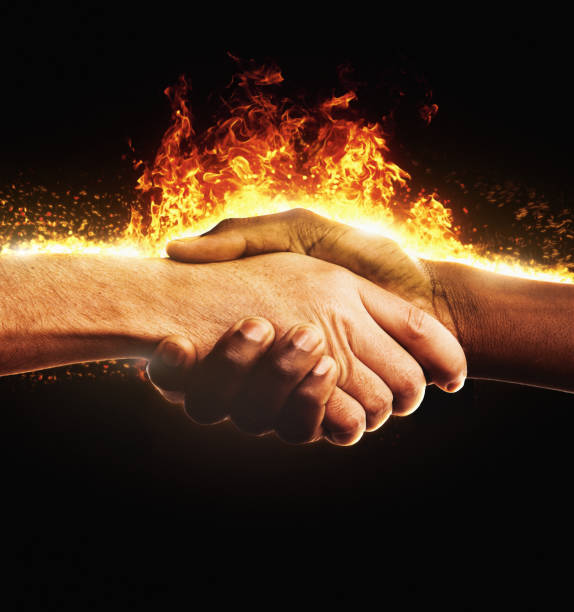
The fire as a character
The fire, when personified as a character in literature, becomes an entity that breathes with a life force uniquely its own.
It possesses its temperament, sometimes playful and dancing like a mischievous sprite, other times raging with the ferocity of a formidable adversary.
As a character, fire has motives, desires, and moods that reflect the story’s emotional landscape. It can be a loyal ally, providing warmth and comfort to a weary traveler, or a malevolent foe, consuming everything in its path with insatiable hunger.
Its flickering flames can mimic the flickers of curiosity in a character’s eyes, or its roaring inferno can mirror the tempestuous passions of the human soul.
In the hands of a skilled writer, fire as a character is a dynamic force that adds depth and complexity to the narrative, igniting the reader’s imagination and forging a bond that transcends the pages of the story.
Symbolism and metaphors
Symbolism and metaphors are the secret codes of literature, the keys that unlock hidden meanings and add layers of depth to storytelling.
They are the literary alchemy that turns ordinary words into vessels of profound insight and emotion. Through symbolism, writers imbue everyday objects, actions, or elements with deeper significance, allowing readers to explore themes and concepts beyond the surface narrative.
Metaphors, on the other hand, are the bridges between the tangible and the abstract, crafting connections that resonate on an emotional level.
They transform the mundane into the extraordinary, enabling writers to paint vivid pictures with words and elicit visceral reactions from their readers.
Whether it’s a rose symbolizing love, a storm representing turmoil, or a journey as a metaphor for life, symbolism and metaphors are the tools that breathe life into literature, inviting readers to journey through the landscapes of the human experience.
Using similes to enhance descriptions
Using similes to enhance descriptions is like adding a sprinkle of stardust to the canvas of language. Similes serve as luminous signposts in the reader’s mind, illuminating the unfamiliar with the familiar.
They invite readers to see, feel, and understand through relatable comparisons, offering clarity and depth to the narrative. A well-crafted simile is a magician’s flourish, transforming a simple phrase into a sensory experience.
Like “whispers as soft as a summer breeze” or “eyes that gleamed like polished sapphires,” these linguistic gems transport readers into the heart of the story, engaging their senses and emotions, and allowing them to taste the world with a writer’s palette of creativity.
Similes are the bridge between the known and the unknown, infusing writing with a touch of magic that lingers in the imagination long after the words have been read.
Describing the Surroundings
Describing the surroundings in writing is akin to being an artist with a boundless palette, ready to paint the world as seen through the mind’s eye.
It’s a symphony of details and emotions, where the landscape becomes a character in its own right, shaping the narrative’s heartbeat.
Whether it’s the lush, emerald-hued forests that whisper secrets to the wind, or the urban jungles pulsating with neon veins of life, the surroundings are the silent witnesses, the stage upon which the drama unfolds.
It’s the art of capturing the essence of a place, not merely through physical attributes, but through the emotions it evokes, the memories it stirs, and the stories it conceals in its nooks and crannies.
Describing the surroundings is the writer’s invitation to the reader, beckoning them to step into a vivid, living world where every word is a brushstroke and every sentence a vivid tableau, waiting to be explored with wide-eyed wonder.
Impact on the environment
The impact of human activities on the environment is a sobering and urgent concern in today’s world. With the rapid expansion of industrialization, urbanization, and resource consumption, we have left an indelible mark on the planet.
From deforestation to pollution, overfishing to climate change, our actions have disrupted ecosystems, diminished biodiversity, and altered the very balance of nature.
The consequences are far-reaching, affecting not only the flora and fauna that share our planet but also posing significant threats to our own well-being.
Recognizing this impact on the environment is a call to action, a reminder that we are stewards of this fragile Earth, tasked with the responsibility of preserving it for future generations.
It is a reminder that the choices we make today will shape the world we leave behind, and that there is an urgent need for sustainable practices and a renewed commitment to the protection and restoration of our natural world.
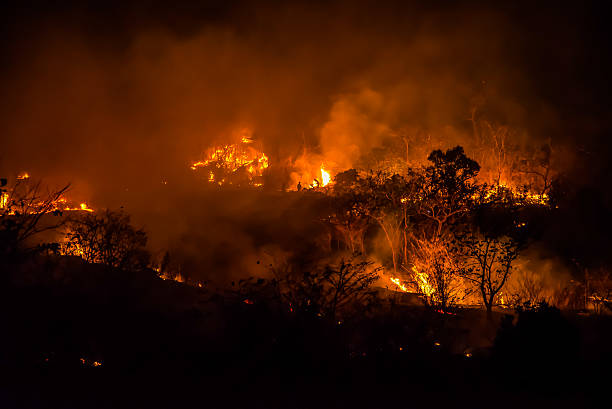
How fire affects the atmosphere
Fire has a profound and immediate effect on the atmosphere, transforming it in both subtle and dramatic ways. As flames consume organic matter, they release a cocktail of gases and particles into the air, including carbon dioxide, carbon monoxide, and volatile organic compounds.
These emissions can contribute to air pollution and exacerbate climate change by adding greenhouse gases to the atmosphere. The intense heat generated by fires can also create localized weather patterns, generating strong updrafts and potentially even tornado-like fire whirls.
Smoke plumes can rise high into the sky, carrying particulate matter and chemicals that can affect air quality and visibility over vast distances.
Additionally, fires can alter atmospheric conditions, including temperature and humidity, which can have cascading effects on weather patterns and regional climates.
Understanding how fires affect the atmosphere is critical not only for ecological and climate research but also for mitigating the health and environmental impacts of wildfires.
Character Reactions and Emotions
Character reactions and emotions are the soulful melodies in the symphony of storytelling, the moments when the ink on the page transforms into beating hearts and racing pulses.
It’s in the quiver of an eyebrow, the catch of a breath, or the fiery blaze in their eyes that readers connect with characters on a visceral level. These reactions are the barometers of the human experience, reflecting the full spectrum of feelings from unbridled joy to the depths of despair.
In the dance of character emotions, writers weave the threads of empathy, making readers not just witnesses but active participants in the narrative.
It’s a dance that can elicit tears, laughter, or that irresistible urge to flip the page to see what happens next. Character reactions and emotions are the heartbeat of storytelling, pumping life into words, and rendering the line between fiction and reality beautifully blurred.
Fear and awe
Fear and awe, two potent emotions that exist on opposite ends of the emotional spectrum, often walk hand in hand through the corridors of human experience. They are the twin sentinels guarding the gates of our deepest vulnerabilities.
Fear, with its icy fingers, can paralyze and consume, while awe, like a radiant light, can uplift and humble. It’s in the heart-pounding terror of standing on the precipice of the unknown and the breathless wonder of gazing upon the sublime that we glimpse the vast range of human emotions.
In literature, they are the tools that writers wield to immerse readers in the worlds they create, whether it’s the fear that tightens the chest as a character faces a formidable foe or the awe that swells in the soul when witnessing a breathtaking natural wonder.
Fear and awe are the emotional architects of unforgettable narratives, sculpting the contours of characters’ journeys and forging connections between readers and the stories they cherish.
Personal connections and memories
Personal connections and memories are the iridescent threads that weave the tapestry of our lives, creating a mosaic of who we are and where we’ve been.
They are the portals to our past, the mirrors reflecting our joys and sorrows, the songs that echo in the chambers of our hearts. In literature, characters’ personal connections and memories are the keys to unlocking the door to their inner worlds, making them relatable and deeply human.
Whether it’s a cherished childhood memory that shapes a character’s worldview or a profound connection with another character that fuels their journey, these emotional touchpoints are the essence of storytelling.
They remind us that, beneath the fantastical settings and grand adventures, it’s the universal experiences of love, loss, friendship, and growth that resonate most profoundly with readers, for they mirror the stories written in the pages of our own lives.
Narrative Techniques
Narrative techniques are the magician’s secrets, the artful sleights of hand that transform a simple tale into an enchanting spectacle. They are the brushstrokes on the canvas of imagination, the architectural blueprints of a literary world waiting to be built.
From the seductive allure of a unreliable narrator to the rhythmic dance of parallel plotlines, narrative techniques shape the very essence of storytelling.
The clever use of foreshadowing is a sly wink to the future, while nonlinear timelines can be a kaleidoscope through which readers view a story’s myriad facets.
Each technique is a tool that allows writers to sculpt emotions, guide perceptions, and orchestrate suspense with the precision of a conductor leading a symphony.
Narrative techniques are the alchemical ingredients that, when blended masterfully, create a literary potion, one that captivates, challenges, and forever lingers in the reader’s soul.
Point of view and voice
Point of view and voice are the twin architects of a story’s soul, determining not only who tells the tale but also how it is told.
Point of view is the lens through which readers perceive the narrative world, whether it’s the intimate first-person perspective, the all-knowing third-person omniscient, or the limited third-person that allows glimpses into select characters’ minds.
Voice, on the other hand, is the unique fingerprint of the storyteller, their tone, style, and narrative personality that breathes life into the prose.
Together, they create the narrative’s heartbeat, shaping character depth, reader engagement, and the overall atmosphere.
Point of view and voice are the storyteller’s signature, the keys that unlock the door to the reader’s imagination, inviting them to step into the world of the narrative and embark on a journey through the minds and hearts of characters, all guided by the lyrical cadence of the storyteller’s voice.
Foreshadowing and symbolism
Foreshadowing and symbolism are the enigmatic whispers that writers infuse into their narratives, like breadcrumbs leading readers down a mysterious and captivating path.
Foreshadowing is the tantalizing glimpse of what lies ahead, a promise of narrative revelations that stir curiosity and anticipation. It’s the subtle tremor that precedes the earthquake, or the cryptic clue that foreshadows an unforeseen twist.
Symbolism, on the other hand, is the intricate tapestry of hidden meanings, where ordinary objects or occurrences take on profound significance.
A red rose may signify love, but in the hands of a skilled writer, it can also represent sacrifice or passion.
Together, foreshadowing and symbolism are the storyteller’s tools for orchestrating a symphony of meaning, inviting readers to decode, interpret, and immerse themselves in a narrative that goes beyond the surface, enriching the reading experience and leaving an indelible mark on their hearts and minds.
Frequently asked questions (FAQ) about describing a fire in writing:
Can I use metaphors and symbolism when describing a fire in my writing?
Absolutely! Metaphors and symbolism can add depth and layers of meaning to your description. For instance, you can compare a fire to a phoenix rising from the ashes to symbolize rebirth or renewal.
How do I describe the sound of a fire without using the word “crackling”?
You can use onomatopoeic words like “sizzling,” “snapping,” or “popping” to describe the sound of a fire. Each word can evoke a different auditory experience.
What’s the difference between describing a controlled campfire and a raging wildfire?
When describing a controlled campfire, you can emphasize the warmth, coziness, and safety it provides. In contrast, when describing a raging wildfire, focus on the uncontrollable, destructive nature, and the terror it can instill.
How can I make my fire description stand out from others in terms of language and style?
Try experimenting with unconventional language and stylistic choices. Use unexpected adjectives, employ alliteration or assonance, or create a unique narrative perspective, such as describing the fire from the perspective of an ancient tree witnessing it.
Is it important to convey the emotional impact of the fire in my description?
Yes, conveying emotions is crucial. Describe how the fire makes characters or the environment feel. Whether it’s fear, awe, comfort, or despair, emotions can engage the reader on a deeper level.
Can I use historical or cultural references when describing a fire scene in a specific setting or time period?
Absolutely! Historical or cultural references can enrich your description. For instance, you might reference ancient rituals involving fire or famous historical fires that occurred in the region you’re describing.
How do I balance the sensory details when describing a fire without overwhelming the reader?
Focus on the most relevant and impactful sensory details for your scene. Choose the senses that will create the strongest impression and enhance the atmosphere you want to convey.
Are there any unique challenges in describing a fire in a science fiction or fantasy setting?
Yes, in speculative genres, you have creative freedom to invent entirely new fire phenomena. You can describe fantastical fires that defy the laws of physics or create unique magical properties.
Can I use the fire as a character or a symbol in my story?
Absolutely! Fire can be a dynamic character or a powerful symbol representing various themes like transformation, destruction, or passion. Just ensure it serves a purpose in your narrative.
Are there any unconventional formats or structures I can use to describe a fire, aside from traditional prose?
Consider experimenting with alternative formats like a poem, a letter, or a diary entry to describe a fire scene. These formats can provide a fresh and unique perspective on the event.
Remember that describing a fire in writing offers endless creative possibilities. Don’t be afraid to push the boundaries and think outside the box to create a memorable and captivating portrayal of fire in your work.
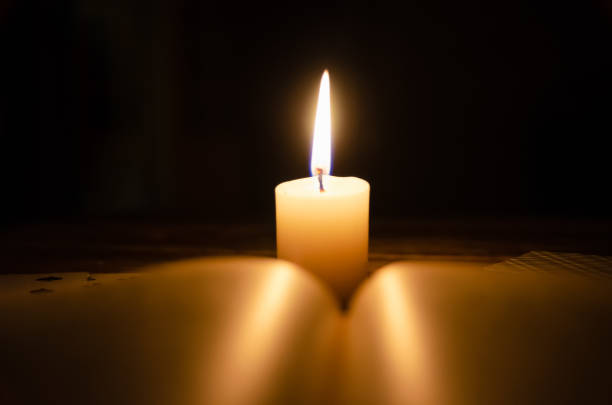
Conclusion
In the realm of creative writing, mastering the art of describing a fire is akin to wielding a potent and evocative tool.
It’s about more than just capturing the visual spectacle of flames; it’s a gateway to the senses, emotions, and symbolism that fire embodies.
A well-crafted fire description can breathe life into a narrative, igniting the reader’s imagination and forging a visceral connection with the story’s world.
As writers, we are not merely chroniclers of events; we are alchemists, conjuring fiery tales that burn in the hearts and minds of our audience.
So, whether it’s the comforting glow of a hearth, the ominous fury of a wildfire, or the metaphorical flames of passion, the ability to describe fire in writing is an art worth honing—a gift that keeps the literary world ablaze with wonder and intrigue.




